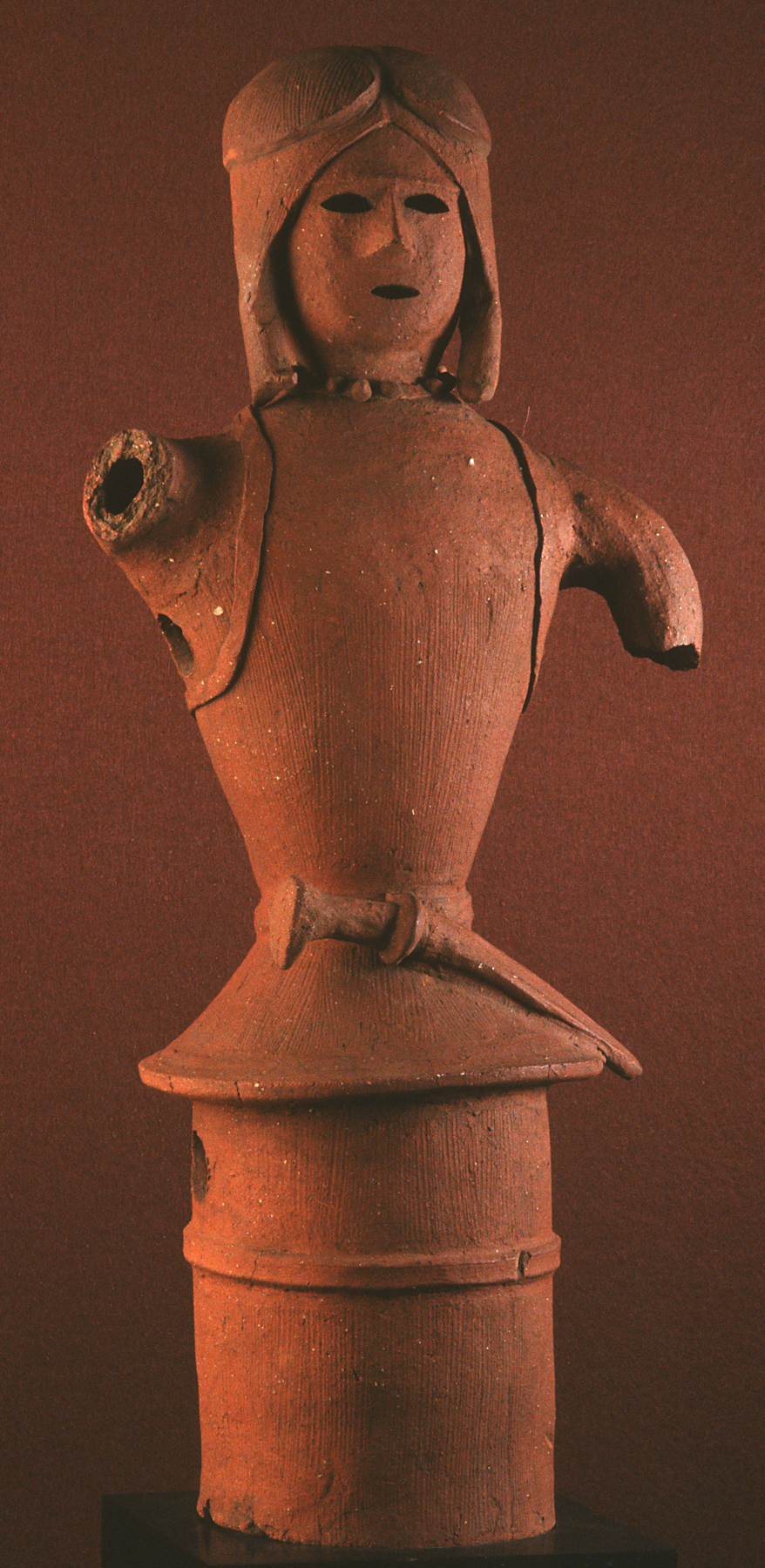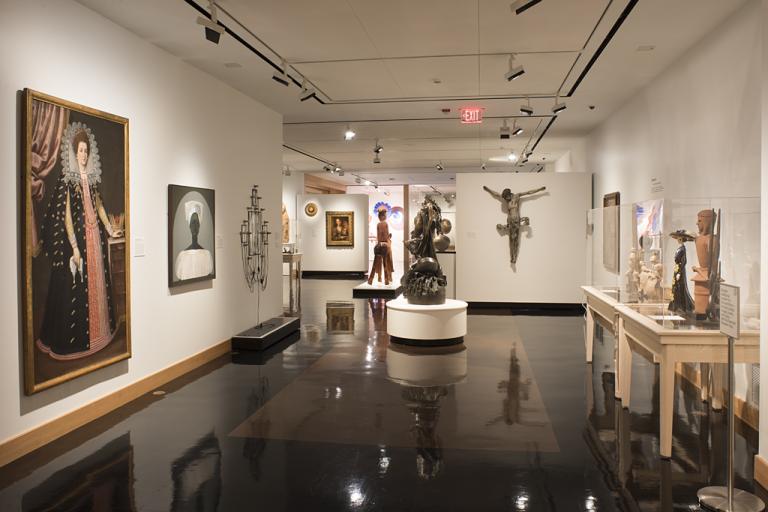Warrior Haniwa, unknown maker from Japan
Artwork Overview

Object Height/Width/Depth (Height x Width x Depth): 81.5 x 32 x 24.5 cm with base
Object Height/Width/Depth (Height x Width x Depth): 32 1/16 x 12 5/8 x 9 5/8 in
If you wish to reproduce this image, please submit an image request
Images
Label texts
Haniwa [haw-nee-wah] are figures from Ancient Japan that were made to mark the burial places of powerful rulers around 1500 years ago. Archaeologists, people who study humans of the past through the materials they left behind, aren’t sure what the purpose of the Haniwa was, but hundreds of them have been found in many different shapes, from warriors like this one to seated women, horses, houses, and more. Some people think they were guardians watching over the person buried there.
What kind of guardian would you create to keep watch over you as you go about your day? Draw a picture of your guardian or sculpt one out of clay.
This haniwa figure once decorated a mound covering the tomb of an important Japanese chieftain. On the slopes or summits of these tombs, haniwa sculptures stood in rows guarding the sacred space while symbolizing the power and importance of the deceased.
This haniwa figure once decorated a mound covering the tomb of an important Japanese chieftain. On the slopes or summits of these tombs, haniwa sculptures stood in rows guarding the sacred space while symbolizing the power and importance of the deceased.
This helmeted warrior with a quiver on his back and a sword at his waist is a relic from Japan's Kofun period. Kofun means earthen burial mound. The figure once decorated a mound covering the tomb of an important chieftain. On the slopes or summits of these tombs, haniwa sculptures stood in rows guarding the sacred precincts while symbolizing the power and importance of the deceased. The cylinder shafts that anchored the haniwa into the earth may have prevented erosion and kept the figures upright. Ropes may have been strung from statue to statue through holes in their bases, designating the haniwa as a divider between the sacred realm of the tomb and the profane world beyond.
Haniwa exhibit a direct connection to one of the earliest known forms of Japanese burial practices. Haniwa were placed on top of the famous keyhole-shaped tombs characteristic of the Kofun Period (250-538 CE). Likely created as tomb guardians, haniwa also validated the importance and power of the deceased elite of society buried in the tombs they surrounded, and in addition, they seem to provide a connection between the human and spirit worlds. Often surrounded by a moat, these burial mounds ranged in size with some stretching a half-mile long, depending on the importance and wealth of the deceased buried in the underground tomb.
Over time, haniwa evolved from simple shapes, such as cylinders, to more concrete and advanced forms, such as animals, houses, boats, and people, including soldiers wearing armor and weapons. This particular soldier (perhaps low-ranking given the lack of elaborate armor) appears to have a quiver and a sword strapped to his body. The cylindrical footing, which provided sturdy anchorage to the earth and prevented disruption during erosion, is typical of the terracotta haniwa form.
Text by Sasha Miller
This helmeted warrior with a quiver on his back and a sword at his waist is a relic from Japan's proto-historic Tumulus period. It once decorated an earthen mound covering the tomb of an important chieftain. On the slopes or summits of these tombs, grouped in rows, haniwa stood guarding the sacred precincts while symbolizing the power and importance of the deceased. The cylinder shafts which anchored the haniwa into the earth may have aided in the prevention of erosion and kept the figures upright. Ropes may have been strung from statue to statue through holes in their bases, designating the haniwa as a divider between the sacred realm of the tomb and the profane world beyond.
Exhibition Label:
"Corpus," Apr-2012, Kris Ercums
This helmeted warrior with a quiver on his back and a sword at his waist is a relic from Japan's proto-historic Tumulus period. It once decorated an earthen mound covering the tomb of an important chieftain. On the slopes or summits of these tombs, grouped in rows, haniwa stood guarding the sacred precincts while symbolizing the power and importance of the deceased. The cylinder shafts which anchored the haniwa into the earth may have aided in the prevention of erosion and kept the figures upright. Ropes may have been strung from statue to statue through holes in their bases, designating the haniwa as a divider between the sacred realm of the tomb and the profane world beyond.
Archive Label:
This helmeted warrior with a quiver on his back and a sword at his waist is a relic from Japan's proto-historic Tumulus period. It once decorated an earthen mound covering the tomb of an important chieftain. On the slopes or summits of these tombs, grouped in rows, haniwa stood guarding the sacred precincts while symbolizing the power and importance of the deceased. The cylinder shafts which anchored the haniwa into the earth may have aided in the prevention of erosion and kept the figures upright. Ropes may have been strung from statue to statue through holes in their bases, designating the haniwa as a divider between the sacred realm of the tomb and the profane world beyond.
Exhibitions
Kate Meyer, curator
Celka Straughn, curator
Kate Meyer, curator
Celka Straughn, curator








